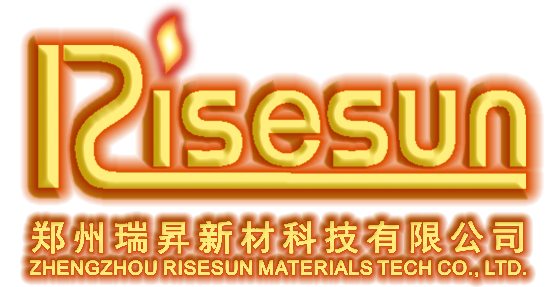31
2025
-
01
Exploring the Benefits of Silicon Carbide Elements in Electric Heating Devices
Silicon carbide (SiC) elements have gained significant attention in the electric heating sector due to their remarkable properties and benefits. As professionals in the electrical and thermal equipment industry, understanding these elements can significantly enhance your product offerings and customer satisfaction. One of the primary advantages of silicon carbide elements is their exceptional ther
Silicon carbide (SiC) elements have gained significant attention in the electric heating sector due to their remarkable properties and benefits. As professionals in the electrical and thermal equipment industry, understanding these elements can significantly enhance your product offerings and customer satisfaction.
One of the primary advantages of silicon carbide elements is their exceptional thermal conductivity. SiC can withstand high temperatures, making them ideal for applications requiring rapid heat transfer. This characteristic allows electric heating devices to achieve higher efficiencies, as less energy is wasted during the heating process. In energy-conscious markets, promoting appliances equipped with silicon carbide elements can significantly attract environmentally-minded consumers.
Durability is another compelling reason to consider silicon carbide elements. They have a high resistance to thermal shock, which means they can endure significant temperature fluctuations without cracking or degrading. This longevity translates to lower maintenance costs and longer service life for heating devices, enhancing their appeal to both manufacturers and end-users. A reduced failure rate means fewer replacements, which can significantly impact operational costs for businesses utilizing these technologies.
Furthermore, silicon carbide elements offer a higher operating temperature range compared to traditional heating elements, such as nickel or stainless steel. This capacity opens the door to new applications in industries where high-temperature resistance is critical, such as aerospace, automotive, and advanced manufacturing. By incorporating SiC elements, companies can cater to specialized needs, thereby expanding their market reach.
Moreover, silicon carbide elements are known for their energy efficiency. These elements can heat up quickly and maintain a steady temperature, which results in lower energy consumption. Faced with rising energy costs, many businesses are seeking ways to reduce their operational expenses, making the energy-efficient properties of silicon carbide elements a strong selling point. By emphasizing energy savings in marketing efforts, businesses can better position themselves as leaders in sustainable practices.
Additionally, the unique properties of silicon carbide allow for smaller and lighter heating elements. This compact design can lead to more versatile applications in various devices and machinery, making them appealing for manufacturers looking to optimize space and weight without sacrificing performance.
In conclusion, silicon carbide elements present a myriad of benefits that can enhance electric heating devices' performance and efficiency. Their durability, energy efficiency, and adaptability make them an attractive option for professionals in the electrical and thermal equipment industry. By understanding and advocating for the use of silicon carbide elements, businesses can not only improve their product lines but also meet the evolving demands of the market. Embracing these innovations could ultimately lead to a competitive edge in an ever-changing industry landscape.
One of the primary advantages of silicon carbide elements is their exceptional thermal conductivity. SiC can withstand high temperatures, making them ideal for applications requiring rapid heat transfer. This characteristic allows electric heating devices to achieve higher efficiencies, as less energy is wasted during the heating process. In energy-conscious markets, promoting appliances equipped with silicon carbide elements can significantly attract environmentally-minded consumers.
Durability is another compelling reason to consider silicon carbide elements. They have a high resistance to thermal shock, which means they can endure significant temperature fluctuations without cracking or degrading. This longevity translates to lower maintenance costs and longer service life for heating devices, enhancing their appeal to both manufacturers and end-users. A reduced failure rate means fewer replacements, which can significantly impact operational costs for businesses utilizing these technologies.
Furthermore, silicon carbide elements offer a higher operating temperature range compared to traditional heating elements, such as nickel or stainless steel. This capacity opens the door to new applications in industries where high-temperature resistance is critical, such as aerospace, automotive, and advanced manufacturing. By incorporating SiC elements, companies can cater to specialized needs, thereby expanding their market reach.
Moreover, silicon carbide elements are known for their energy efficiency. These elements can heat up quickly and maintain a steady temperature, which results in lower energy consumption. Faced with rising energy costs, many businesses are seeking ways to reduce their operational expenses, making the energy-efficient properties of silicon carbide elements a strong selling point. By emphasizing energy savings in marketing efforts, businesses can better position themselves as leaders in sustainable practices.
Additionally, the unique properties of silicon carbide allow for smaller and lighter heating elements. This compact design can lead to more versatile applications in various devices and machinery, making them appealing for manufacturers looking to optimize space and weight without sacrificing performance.
In conclusion, silicon carbide elements present a myriad of benefits that can enhance electric heating devices' performance and efficiency. Their durability, energy efficiency, and adaptability make them an attractive option for professionals in the electrical and thermal equipment industry. By understanding and advocating for the use of silicon carbide elements, businesses can not only improve their product lines but also meet the evolving demands of the market. Embracing these innovations could ultimately lead to a competitive edge in an ever-changing industry landscape.



